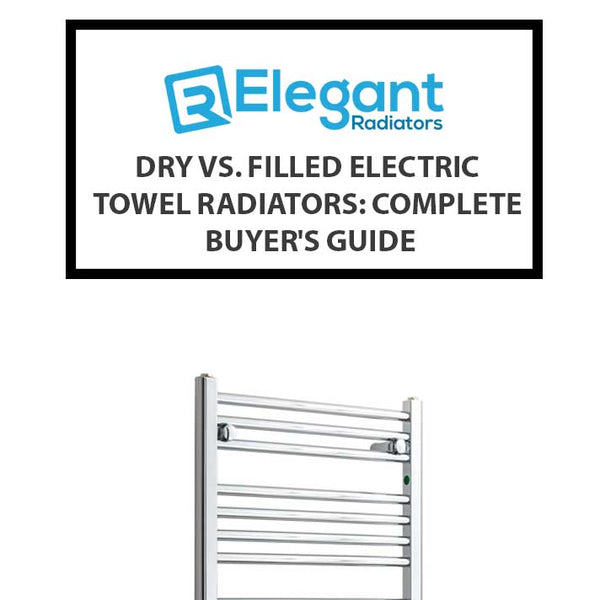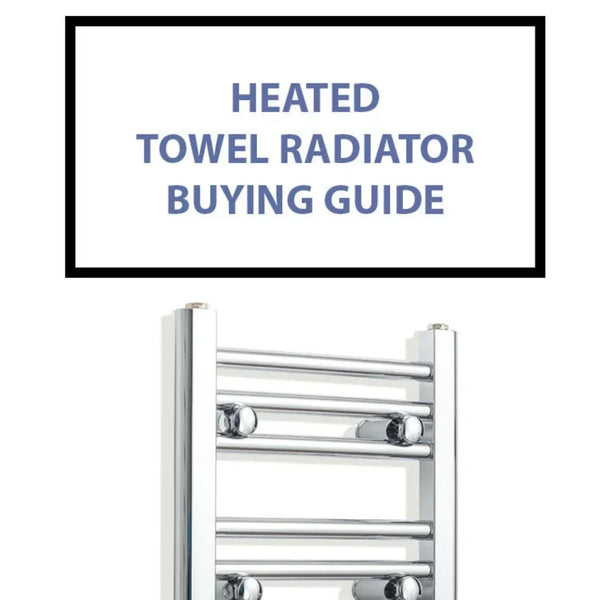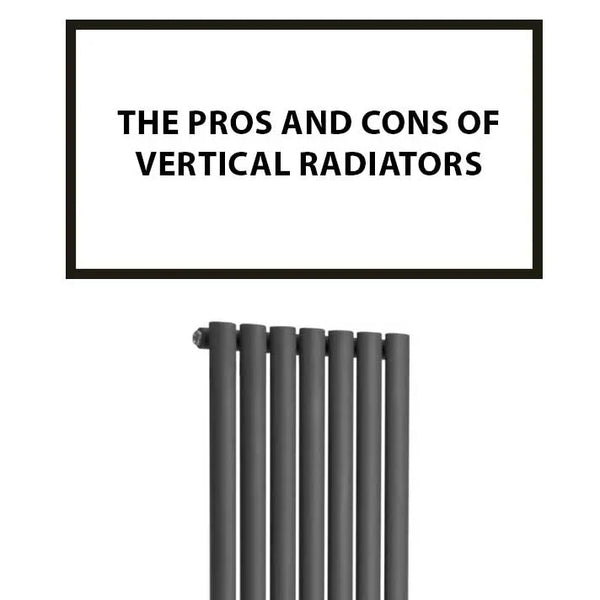The Complete Guide to Hallway and Corridor Radiators: Heating Solutions for Narrow Spaces

Discover the best radiator solutions for hallways and corridors. From slim vertical designs to space-saving electric options, find the perfect heating solution for your narrow spaces.
Introduction: Why Hallway Heating Matters
Hallways and corridors are often the most neglected spaces when it comes to home heating, yet they play a crucial role in your home's overall comfort and energy efficiency. A cold hallway acts as a thermal bridge, drawing heat away from living spaces. Whether you're renovating a Victorian terrace or fitting out a new build, choosing the right hallway radiator can transform both functionality and aesthetics of these narrow spaces.
The challenge lies in finding a radiator that delivers sufficient heat output without overwhelming limited floor space. Traditional panel radiators protrude too far from walls and become obstacles in high traffic areas. Fortunately, modern radiator design offers slim, vertical, and designer options specifically engineered for space constrained environments.
Understanding Hallway Heating Requirements
Before selecting a hallway radiator, understand the unique heating demands of these spaces. Hallways experience high foot traffic, frequent door openings, and significant heat loss through entrance doors and stairwells. A proper BTU calculation is crucial to ensure adequate heating.
Calculating BTU Requirements for Corridors
The standard BTU formula considers room dimensions, insulation quality, window area, and external wall exposure. For hallways, add 10-15% extra to account for heat loss through front doors and the chimney effect in properties with staircases. A typical UK hallway measuring 4m by 1.5m with average insulation requires approximately 1,500-2,000 BTUs.
Calculate by measuring length, width, and height in metres, then multiply together. Use 40-50 BTUs per cubic metre for poorly insulated pre-1930s homes, 30-40 for moderately insulated 1930-1990 properties, and 25-30 for modern well-insulated homes. Add 1,000-1,500 BTUs for external doors and another 500-1,000 if connected to an open staircase.
Key Factors Affecting Hallway Heat Loss
Front doors, particularly in older properties without modern insulation, account for substantial heat loss. Single-glazed sidelights compound this problem. Properties with open staircases experience the stack effect, where warm air rises and escapes through upper floors whilst cold air is drawn in at ground level.
Traditional Victorian doors often feature single-glazed panels and gaps around frames allowing cold air infiltration. Composite doors offer dramatically better thermal performance, with U-values as low as 0.8 W/m²K compared to 3.0+ for older timber doors. If replacement isn't practical, thermal curtains, brush strips, and letterbox covers can reduce heat loss by up to 30%.

Types of Radiators Suitable for Narrow Spaces
Vertical Radiators
Vertical radiators maximise wall height rather than width as narrow as 200mm whilst reaching 1800mm or more. This orientation is perfect for installation between doors, in alcoves, or alongside staircases. Modern vertical radiators come in traditional column styles and contemporary flat panel designs.
Modern units incorporate sophisticated internal water flow patterns ensuring consistent heating from top to bottom. Tall radiators draw the eye upward, making ceilings appear higher a valuable effect in narrow corridors. Column-style options offer different depth and heat output configurations, whilst flat panels provide contemporary aesthetics with easy-to-clean surfaces.
Slim Panel Radiators
For hallways where vertical radiators aren't practical, slim panels offer an excellent alternative. These units feature reduced depth sometimes as little as 50mm from the wall. Single panel designs without convector fins provide adequate heat without protruding into walkways, working brilliantly beneath narrow windowsills or in tight corners.
Modern slim panels use micro-channel technology with hundreds of small internal passages increasing surface area contact with heating water, delivering impressive BTU outputs from remarkably thin units. Their reduced depth means they fit beneath windowsills as shallow as 100mm and in spaces where deeper radiators would obstruct movement. Look our Small Bathrroom Radiators
Designer Radiators
Designer radiators transform functional heating elements into striking visual features. In hallways often the first space visitors see a carefully chosen designer radiator makes a powerful statement. Options range from minimalist stainless steel tubes to sculptural aluminium panels and radiators that double as mirrors or coat hooks.
Mirror radiators combine a full-length looking glass with heating elements perfect for checking your appearance before leaving home. Heated coat racks provide practical storage whilst ensuring coats dry quickly after wet weather. Material choices include stainless steel for durability, aluminium for rapid heating, and glass-fronted options available in various colours.
Electric Radiators for Hallways
Electric radiators require no plumbing connections, ideal for adding heating where extending pipework would be difficult or expensive. Modern units feature sophisticated thermostatic controls for precise temperature management. Many models include WiFi connectivity for remote adjustment perfect for warming your hallway before arriving home.
Modern electric radiators incorporate ceramic cores, thermal fluid, or dry stone elements that retain heat long after the electrical element switches off. WiFi-enabled models connect to smartphone apps for remote control, whilst advanced units learn your usage patterns and adjust automatically. Integration with voice assistants enables hands-free control, and geofencing uses your smartphone's location to adjust heating as you approach home.
Choosing the Right Size and Position
Optimal Placement Strategies
The ideal position is typically on an internal wall opposite the front door, creating a warm air curtain that counteracts cold draughts. If layout doesn't permit this, positioning near the coldest point usually adjacent to the front door helps offset heat loss. Avoid placing radiators behind doors or where furniture blocks heat circulation.
Warm air rises from the radiator, travels across the ceiling, then cools and descends on the opposite side. With the radiator opposite the front door, this circulation creates a thermal barrier intercepting cold air entering through the doorway. When ideal positioning isn't achievable, compensating with a slightly larger radiator ensures adequate heat output.
Measuring Your Space Accurately
Measure available wall space carefully, accounting for door frames, electrical sockets, light switches, and architectural features. For vertical radiators, ensure at least 100mm ceiling clearance. Consider the radiator's depth as well as height and width even slim models require some wall projection for effective heat distribution.
Mark positions of obstructions door frames need 50-100mm clearance each side, electrical sockets need 150mm clearance. Wall construction affects installation: solid brick supports any radiator weight, but stud partition walls need fixings into timber studs for heavier units. Locate studs before finalising position to ensure secure mounting.
Installation Considerations for UK Homes
Central Heating Integration
Most UK homes operate wet central heating systems, and integrating a new hallway radiator is usually straightforward. However, adding radiators increases boiler demand. Check your boiler has sufficient capacity properties with older boilers may benefit from a system assessment.
Add up BTU output of all existing radiators, then add the proposed hallway radiator requirement. Convert to kilowatts (divide by 3,412) and compare with your boiler's rated output. Modern condensing boilers operate most efficiently at 70-80% of maximum output. If adding the radiator exceeds 85% capacity, expect reduced performance during cold weather peaks.
Pipework and Valve Options
Vertical radiators typically require bottom connections, with pipes emerging from the floor or running along skirting boards. For the cleanest appearance, consider concealed pipework through wall cavities. Thermostatic radiator valves (TRVs) provide individual temperature control and prevent overheating in transitional spaces.
Surface-mounted pipework remains most economical, with plastic push-fit systems largely replacing soldered copper. Pipe boxing can conceal surface runs whilst maintaining access. TRVs automatically adjust water flow based on room temperature smart TRVs connect to home automation for app-based control. For designer radiators, angled valve sets position connections discreetly.
Building Regulations and Compliance
Replacing like-for-like radiators generally doesn't require building regulations approval. However, electric installations must comply with Part P in England and Wales, particularly if new circuits are required. Listed properties or conservation areas may require additional approvals for visible pipework.
Adding new electrical circuits constitutes notifiable work use an installer registered with a competent person scheme or notify building control. Plugging into existing sockets doesn't require notification, but ensure circuits can handle the load. For listed buildings, contact your local conservation officer before starting work.
Energy Efficiency and Running Costs
Modern radiators maximise heat output whilst minimising energy consumption. Aluminium radiators heat up and cool down rapidly, ideal for intermittent hallway use. Steel radiators retain heat longer, providing sustained warmth but requiring more energy to reach temperature.
Smart heating controls dramatically improve efficiency. Programmable thermostats heat your hallway only when needed. Zoning systems enable independent control, preventing energy waste during unoccupied periods. Many modern electric radiators include built-in energy monitoring to track and optimise consumption.
Style and Design Considerations
Matching Period Properties
For Victorian, Edwardian, and Georgian properties, column radiators offer authentic period styling. Traditional cast iron complements heritage interiors, whilst modern steel columns provide the classic aesthetic with improved efficiency and lighter weight. Anthracite, bronze, and heritage colours blend with period features.
Reclaimed radiators offer genuine heritage character but require inspection for corrosion and cracks. Steel column radiators weigh 60-70% less than cast iron equivalents whilst delivering comparable heat output. Finish options include heritage colours that complement encaustic tiles and ornate plasterwork found in older hallways.
Contemporary and Minimalist Spaces
Modern homes benefit from sleek, understated designs. Flat panel radiators in white or anthracite integrate seamlessly with contemporary décor. Horizontal ladder-style radiators provide clean lines whilst offering practical hanging points for scarves and gloves. Mirror radiators visually expand narrow hallways whilst providing heating.
Ultra-flat models project as little as 35mm from walls, minimising visual presence. Ladder-style radiators bring practical functionality with horizontal bars for drying wet coats and umbrellas. Dual-fuel versions incorporate electric elements for year-round use when the boiler is switched off during warmer months.
Colour and Finish Options
Modern radiators are available beyond traditional white. Anthracite grey has become increasingly popular, offering sophisticated neutrality for both traditional and contemporary interiors. Matt black creates dramatic impact, whilst metallic finishes like brushed stainless steel or copper add warmth and luxury.
Metallic finishes introduce warmth and light reflection that painted surfaces cannot replicate. Polished chrome suits contemporary and Art Deco schemes, whilst copper and bronze complement wooden floors and natural materials. RAL colour matching allows specification of virtually any shade from 213 colours for exact coordination with your décor.
Maintenance and Care
Proper maintenance ensures efficient operation for years. Bleed radiators regularly typically at each heating season's start to remove trapped air reducing heat output. Check for leaks at valve connections and bracket fixings. For electric radiators, occasional dusting and checking electrical connections maintains safe operation.
Annual system maintenance by a qualified engineer keeps your heating system optimal. Power flushing removes sludge and debris improving heat distribution. Inhibitor treatment protects against internal corrosion, extending radiator lifespan and maintaining efficiency throughout your home.
Conclusion: Creating a Warm Welcome
Your hallway is the first impression visitors receive, and a well-chosen radiator contributes significantly to creating a warm, welcoming atmosphere. By understanding heating requirements, exploring available options, and selecting designs complementing your interior style, you can transform this often-overlooked space into a comfortable transition zone.
Whether you opt for a striking vertical designer radiator, practical slim panel model, or versatile electric unit, the key is matching heat output and dimensions to your specific requirements. With proper installation and maintenance, your hallway radiator will provide reliable, efficient heating for years to come.
Browse our extensive collection of hallway radiators to find the perfect heating solution for your home. Our expert team is available to help calculate BTU requirements, select appropriate sizes, and answer technical questions about installation and compatibility with your existing heating system.







